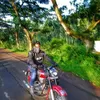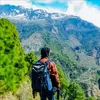Post
I would say September as Rohtang pass would be open then, so you can exit via Manali.
Spiti Valley is open at the end of May. Best time to explore valley.
If you travel by bike you can go in april or may is the best time you can have many river crossings it is one of the best thing if you can manage have a safe trip ✌...
Months of (March to June) are when this enchanting valley starts to shed its white snowy shroud after the cold and dark winter months. Travelers who want to skip the crowds and explore the place in seclusion start approaching Spiti from Shimla.
The days are bright, clear and pleasant enough to spend time soaking in the beauty of the place. The nights are cold yet great for camping under the brilliantly star-lit skies. Duration of summer: Summers in Spiti start in March and last till June.
Average Temperature: The average temperatures range between 15°C in the day to around 6°C in the night. If you plan to visit Spiti between March-May, you will have to take the Shimla-Spiti route, which makes the valley accessible throughout the year. This route passes from Shimla – Narkanda – Rampur – Kalpa - Nako-Giu Village - Tabo Village – Dhankar - Pin Valley (Mud Village) – Kaza
If you are travelling in June, you can access Spiti from the Manali side. The route, in this case, will be Manali – Solang Valley – Rohtang Pass – Gramphu – Batal – Chandratal – Kunzum Pass – Losar – Kaza Places to see during the summer:
- Chandratal: Also known as the moon lake, this is one of the most beautiful places in Spiti Valley. It’s a surreal experience seeing the calm crystal clear waters in shades of grey-blue-green reflect the massive brown mountains.
- Dhankar: Dhankar is famous for its 1200-year-old monastery, the pristine lake, and the ancient fort.
- Tabo: One of the most intriguing places in the region, Tabo is famous for its hidden cave systems, an ancient monastery, and stark barren landscape.
- Hikkim: Famous for housing the world’s highest post office, Hikkim is a must-visit in Spiti valley.
- Komic: Considered to be the highest village in the world with a running motorable road, Komic is an absolute must-visit.
- Langza: People interested in fossil hunting love to visit Langza. Another great attraction is the huge golden statue of Lord Buddha overlooking the valleys as if guarding them. Fairs & Festivals in Summer:
Tsheshu festival (June): Also known as the Kye Chham festival, this colourful festival is when the lamas perform the devil dance attired in masks of animals and birds to invoke the spirits and get blessed for prosperity. You can see this festival at monasteries like Shashur, Tabo, Mane, and Gemur. Pros:
- Starting June, Spiti valley is accessible from the picturesque Manali route, which is also shorter. However, keep a check on the weather conditions and take this route only after you have confirmed reports about the opening of the passes.
- If you shy away from crowds and are seeking solitude, early March is the best time to visit Spiti. Since the Manali route opens only in June, you will see fewer tourists and can enjoy the solitude.
- The weather is at its pleasant best during the summer months. The days are sunny and clear and perfect for exploring this beautiful place.
- The great weather conditions allow you to enjoy adventure activities like trekking, biking, night camping, etc.
- Since all the hotels and guesthouses are open in summers, you have a lot of options depending on your choice and budget. Cons:
- If you plan to travel during early March, be prepared for bad stretches of road. Since the snow starts to melt around this time, some patches might be slippery and broken.
- The nights can get a bit colder, uncomfortable for those who are not used to low temperatures.









